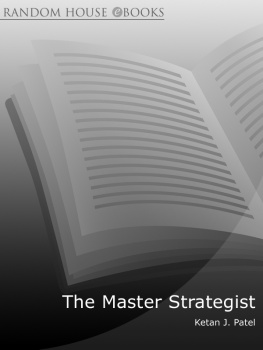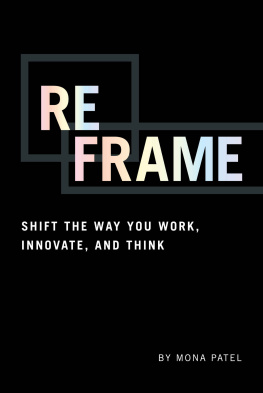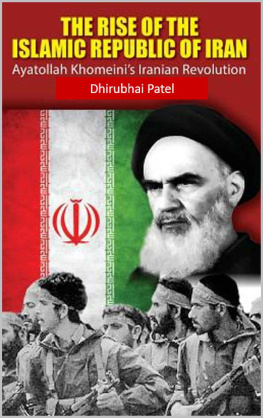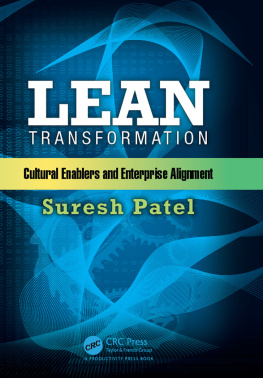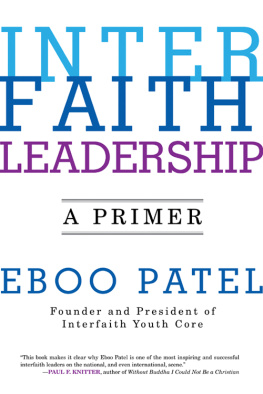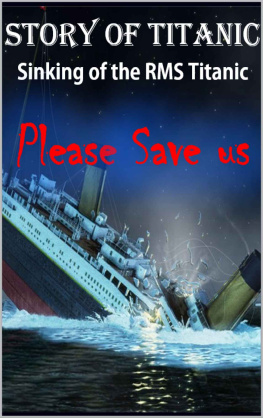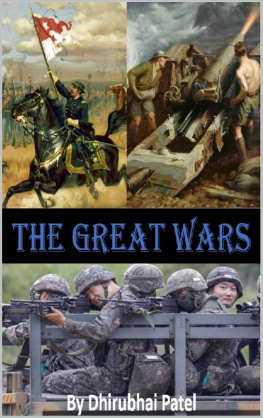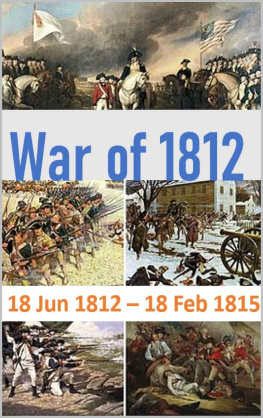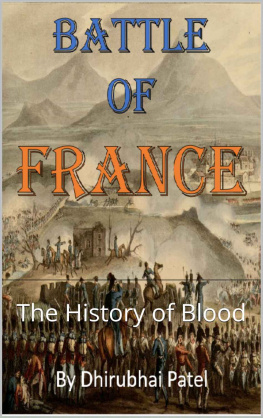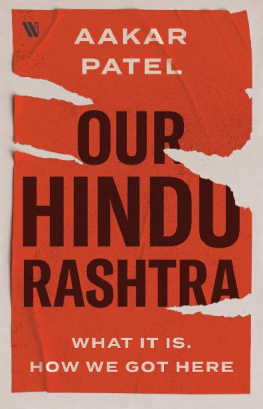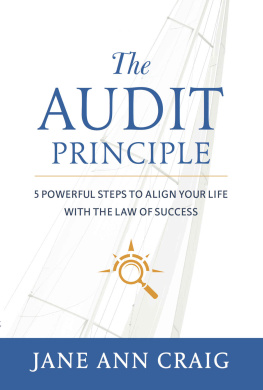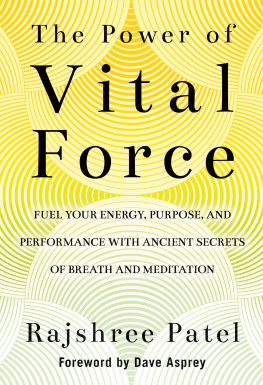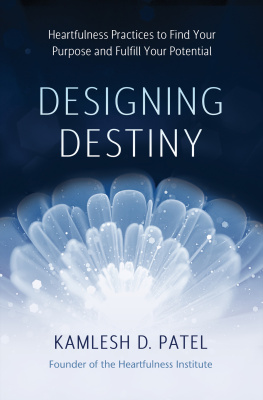Patel - The master strategist: power, purpose and principle
Here you can read online Patel - The master strategist: power, purpose and principle full text of the book (entire story) in english for free. Download pdf and epub, get meaning, cover and reviews about this ebook. City: London, year: 2011, publisher: Arrow;Cornerstone Digital, genre: Romance novel. Description of the work, (preface) as well as reviews are available. Best literature library LitArk.com created for fans of good reading and offers a wide selection of genres:
Romance novel
Science fiction
Adventure
Detective
Science
History
Home and family
Prose
Art
Politics
Computer
Non-fiction
Religion
Business
Children
Humor
Choose a favorite category and find really read worthwhile books. Enjoy immersion in the world of imagination, feel the emotions of the characters or learn something new for yourself, make an fascinating discovery.
- Book:The master strategist: power, purpose and principle
- Author:
- Publisher:Arrow;Cornerstone Digital
- Genre:
- Year:2011
- City:London
- Rating:4 / 5
- Favourites:Add to favourites
- Your mark:
- 80
- 1
- 2
- 3
- 4
- 5
The master strategist: power, purpose and principle: summary, description and annotation
We offer to read an annotation, description, summary or preface (depends on what the author of the book "The master strategist: power, purpose and principle" wrote himself). If you haven't found the necessary information about the book — write in the comments, we will try to find it.
Patel: author's other books
Who wrote The master strategist: power, purpose and principle? Find out the surname, the name of the author of the book and a list of all author's works by series.
The master strategist: power, purpose and principle — read online for free the complete book (whole text) full work
Below is the text of the book, divided by pages. System saving the place of the last page read, allows you to conveniently read the book "The master strategist: power, purpose and principle" online for free, without having to search again every time where you left off. Put a bookmark, and you can go to the page where you finished reading at any time.
Font size:
Interval:
Bookmark:
On The Master Strategist by Ketan J Patel
Ketan Patel is the founder and chief executive of an investing institution, Greater Pacific Capital, which applies global financial and intellectual capital to the rapidly rising markets of China and India. Ketan is also establishing think tanks in both countries to foster deeper exchange and understanding. He was formerly a managing director at Goldman Sachs, where he built and headed their global think tank, The Strategic Group, to influence the agendas of selected global CEOs, investors and governments. He pursues interests in a broad range of areas including geo-politics and esoteric thought. He has practised and continues to learn from the disciplines of Tai Chi, Wing Chun, Pranayam Yoga and meditation.
Since the turn of the century, we have seen hopes of a new era of peace shattered by the attacks of 9/11. We have witnessed the US become embroiled in a divisive and seemingly unwinnable war in Iraq. We have looked on as new nuclear rivalries have sprung up with Iran and North Korea. We have seen Europe struggle to define its place in the New World Order. And we have observed the balance of world focus shift towards China and India as they have continued their unprecedented economic rise.
What is the significance of all of this? Are these random events or is there an underlying pattern? What is required of leaders and individuals to propel the world in a more positive direction? The Master Strategist provides the means to decipher these changes, offering unique insights into the issues and patterns that are defining the future, and pointing the way to strategies for a freer and more peaceful and prosperous world.
Sometimes chaos appears to have order. So, we think we understand what we observe.
EVENTS HAVE CREPT up on us while we have been immersed in everyday life. They leave us with problems we cannot solve. These problems lead us to question every part of our lives. Regarding politics, how much trust can we put in our leaders? Can we even be sure they act in our interests? Regarding society, is our way of life sustainable? Regarding security, are we safe going about our day-to-day activities? Regarding economics, do we understand how to sustain our prosperity let alone expand it to others? Regarding commerce, do we know how to make money in a world of ever-changing rules? Regarding the environment, what are the consequences of our decisions on our world and are we worthy stewards of the resources of the planet? Regarding technology, is it delivering benefits or simply disrupting the existing order? On an individual basis, how well can we look after our loved ones and can we balance our ambitions, our relationships and our responsibilities?
Choices seem to lead to more confusion and actions to more problems. The sheer number of such events that have arisen all at once leave us unable to rely on the approaches, methods and formulae of the past. We face the need to rethink our approach. What is the nature of these events and why are they so confusing at this point in history?
Our confusion is due to the many possibilities open to us, which are the result of mankind passing a number of milestones. These milestones have a pattern that we will refer to as The Seven Shaping Phenomena. However, let us not get over-constrained by seven phenomena. This is simply one picture made from the pieces that make up our world.
The first phenomenon is the continual and inexorable breaking of barriers, which means performance particularly human, machine and computing performance is no longer limited.
Men and women are breaking what were previously assumed to be unbreakable barriers both in physical and mental performance. Man has increased his stamina and speed to levels unimaginable a century before. In 2003, the record breaker ran the 26-mile marathon almost 30 per cent faster than his equivalent in the 1897 24.7-mile marathon. Over approximately the same period, Man has jumped nearly 15 per cent further, almost 25 per cent higher and swum the 400 metres freestyle more than 20 per cent faster. During the last 50 years of the 20th century, man even ran the intense 100 metres race almost 10 per cent faster.
So, at two extremes, we stand on the brink of the Age of Performance or the Age of New Decadence.
Our inventive creation of machines for almost everything we do has created an era of prosperity never before seen in the history of Man. The pace of machine breakthroughs has grown at an exponential speed. The agricultural era was set to be transformed almost 5,000 years ago with the invention of the basic calculating machine, the abacus. However, breakthroughs in automation and accuracy did not arrive until c.200 BC , when the Chinese developed an accurate water clock and an entire automated mechanical orchestra. Even with this platform, it took nearly a thousand years to build the first true mechanical clock in 726 AD . And it was not until 1642, that Pascal invented the first automatic calculating machine for adding and subtracting.
The pace of mechanisation picked up dramatically following the Industrial Revolution in the 18th century, and the world was set to create all manner of production The next hundred years saw rapidly accelerating innovations in machine technology being applied to almost every aspect of life. These machines enabled us to further break the barriers of nature, allowing the weakest of men to go faster, further and higher than the previous generation of the highest performing men.
This ability to make almost anything now places us on the edge of truly liberating us from many of the limitations of the human body and many of the barriers of the environment. However, the increasing substitution of machines for men in not only the drudgery of labour but also services, entertainment and other creative endeavours threatens the very role and value of the individual in society.
So, at two extremes, we stand on the brink of the Age of the Rise of Machines or the Age of the Fall of Men.
Computing speed doubled every three years in the 40 years to 1950. In the next 20 years it doubled every two years. By 2000, it was doubling every year. In 1997, IBMs Deep Blue Supercomputer defeated the reigning chess champion. In the first few years of the 21st century, a supercomputer being built for the US Department of Energy was expected to have a power of 100 trillion calculations per second the same processing power, according to the Robotics Institute at Carnegie Mellon University, as the human brain. This is not to suggest that the matching of the human brain by computers is imminent. Based on the number of neurons and connections between neurons, it is estimated that for tasks such as vision, language and motor control, the brain is more powerful than 1,000 supercomputers, but for tasks such as multiplying and searching it is less powerful than a 4-bit microprocessor found in calculators.
Font size:
Interval:
Bookmark:
Similar books «The master strategist: power, purpose and principle»
Look at similar books to The master strategist: power, purpose and principle. We have selected literature similar in name and meaning in the hope of providing readers with more options to find new, interesting, not yet read works.
Discussion, reviews of the book The master strategist: power, purpose and principle and just readers' own opinions. Leave your comments, write what you think about the work, its meaning or the main characters. Specify what exactly you liked and what you didn't like, and why you think so.

